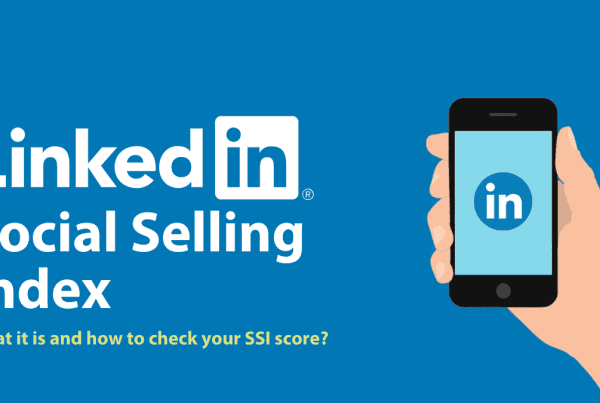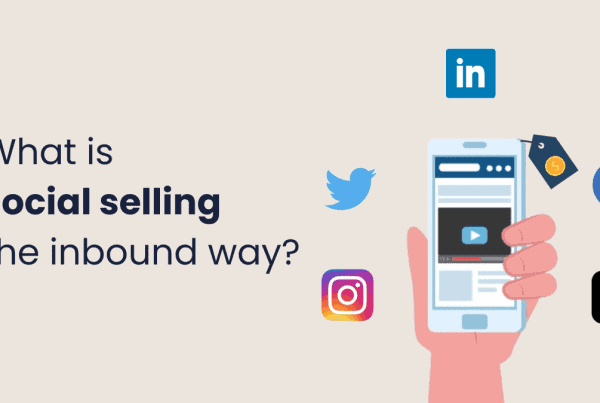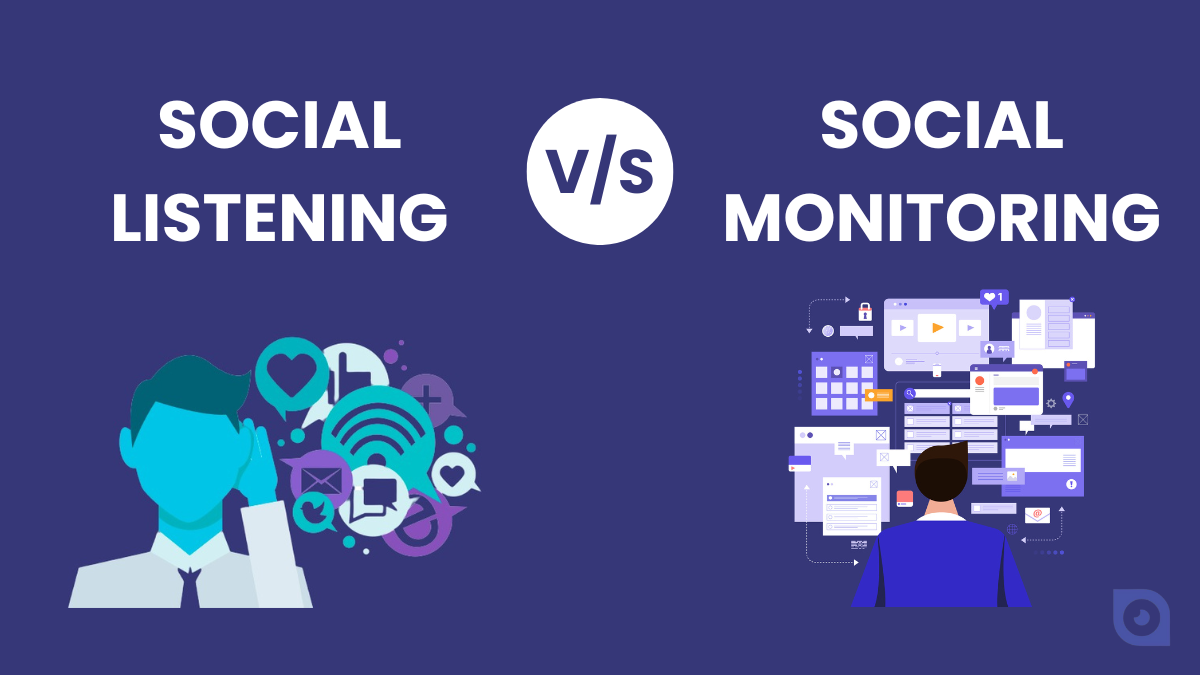
Social media platforms are becoming crowded meeting places where a lot of people hang out. Regular folks use these platforms for entertainment, but businesses use these platforms for marketing, engagement, and many more benefits. By using these platforms smartly, businesses can achieve their business goals faster.
In this article, we are going to talk about two important things when it comes to being smart about social media: ‘Social Listening’ and ‘Social Monitoring’.
‘Social Monitoring’ means keeping an eye on social media and the internet to find out what people are saying about a brand, product, or certain words. It’s like having a special tool that searches online all the time to catch any news or comments that are important for you or your business.
On the flipside, ‘Social Listening’ does more than just gather data. It looks closely at the information collected to figure out what people are feeling and thinking about your brand or whatever you’re interested in. It’s like digging deeper to see the bigger picture and understand what all the gathered information means. It’s not just about getting facts; it’s about understanding what those facts are trying to tell you.
Even though Social Listening and Social Monitoring might sound similar, they do different jobs and give different ideas. As we look more closely at this subject, we’ll learn about these distinctions and why it’s important to use both in a smart plan for social media.
Social Monitoring Definition
‘Social Monitoring’ is like having a digital detective keeping watch online. It’s all about finding and collecting particular details and comments about a brand, product, or certain words across social media and the internet. It’s as if you have a special radar always searching the online world for anything important about you or your business.
It helps you stay updated on what people are saying about your brand online, including their opinions, feedback, and discussions about your industry. It’s like keeping your finger on the pulse of your brand’s reputation and what customers are saying. This way, businesses can quickly answer any questions or address concerns from customers, interact with their audience, and stay in the loop about what’s happening in their industry.
Platforms like Nexalogy, Hootsuite, Mentionlytics, Reputology, Fedica (formerly Tweepsmap), etc, are good examples of tools that can help in Social Monitoring. These platforms usually search through different social media sites and websites to find any mentions of your brand, products, or specific words you’re interested in. These tools look for this information all the time, so you get updates quickly. This helps businesses to react fast if there’s something they need to address.
Let’s say there’s a company that wants to keep an eye on what people are saying about their brand on Twitter. If someone tweets about having a problem with their product, the company can see it right away using social monitoring. They can then reply to the customer’s tweet, fixing the issue and showing that they care about good service. Similarly, a restaurant could use social monitoring to read reviews on sites like Yelp or TripAdvisor. This helps them learn what customers like or don’t like, so they can make their service better.
Below is an example of how Hotel Hilton addressed a complaint from an unhappy customer in just 13 minutes, thanks to their proactive social monitoring. This swift action helps prevent negative experiences from gaining widespread attention.
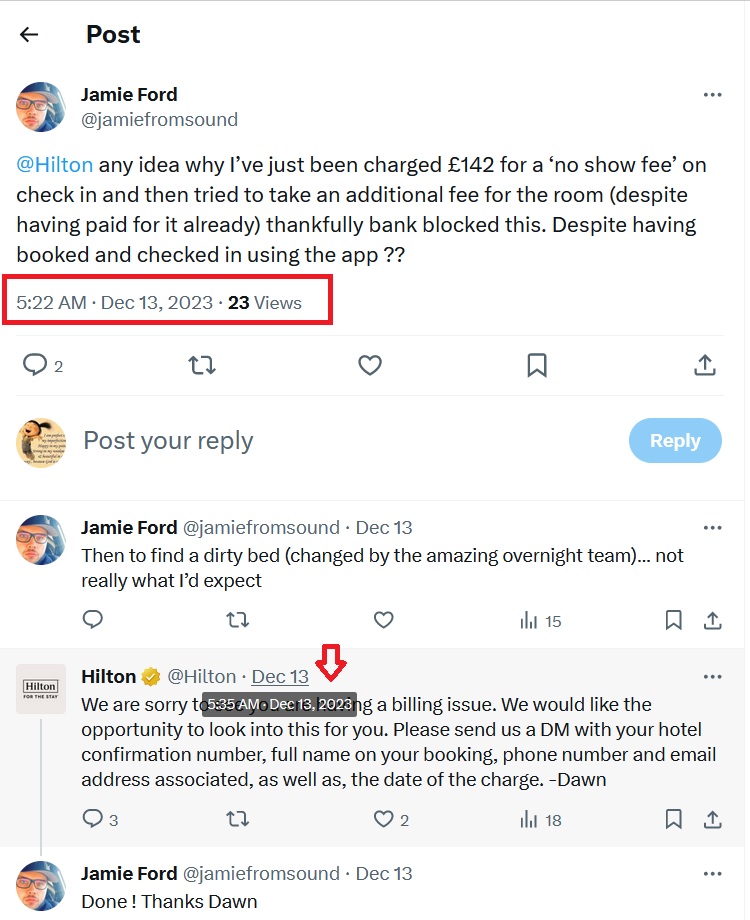
Social Listening Definition
‘Social Listening’ is a process of paying attention to all the talks and trends not just about your brand, but also about your whole industry. Then, you use what you’ve learned to make smarter choices about your marketing. It’s not just about keeping an eye on things and gathering information; it’s about studying that information to figure out what to do next.
It helps us figure out why people are talking about things. It’s like trying to understand the feelings and reasons behind what people say about your brand. For businesses, it’s really useful because it can help them figure out if people like or dislike their brand, find new potential customers, spot people who are influential or supportive, see what’s trending in their industry, and get ideas for how to plan their next moves.
Social listening uses special tools, like Adview, Hootsuite, Talkwalker, Synthesio, etc, that do more than just find social media conversations and mentions. They also study them to find patterns, trends, and smart ideas. These tools use fancy technology like advanced analytics and natural language processing to figure out the feelings and emotions behind what people are saying.
Here’s an example: Let’s say a brand launches a new advertising campaign. They can use social listening to see what people are saying about it. By checking the “feelings” behind these comments, they can tell if the campaign is going over well or if people are unhappy with it. Similarly, a company could use social listening to spot common problems or complaints from customers. This helps them fix issues before they become bigger problems and make their product or service better.
Below is a great example of social listening. Semrush’s marketing team adeptly demonstrates the power of social listening by actively engaging with influencers and the wider community on social media. Their timely and personal responses to users’ discussions about their brand, as seen in their interaction with a user considering their service, highlights a commitment to customer engagement and adaptability to feedback. This approach enhances brand presence and fosters user loyalty.
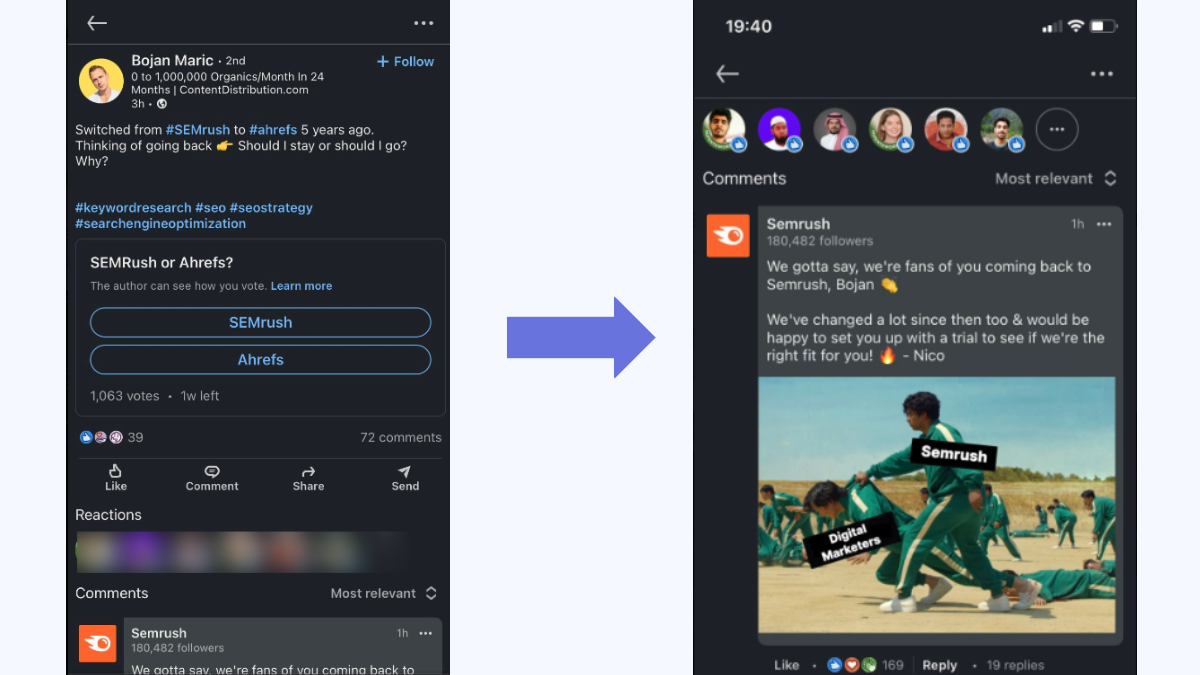
Social Listening Vs Social Monitoring
While both social listening and social monitoring involve tracking social media conversations, they differ in their objectives, methodologies, and outcomes. Here are the key differences:
Social Monitoring
- Objective: “Tracks specific mentions and keywords related to a brand or product” means keeping an eye out for particular words or phrases that people say about a brand or product. It’s like setting up an alarm to catch any time someone talks about something specific.
- Methodology: “Uses tools to scan social media platforms and websites for specific mentions in real-time” means using special computer programs to constantly look through social media sites and websites to find certain words or phrases as soon as they’re mentioned. It’s like having a robot that’s always searching the internet for specific things you’re interested in.
- Outcome: “Provides real-time data about brand mentions, customer feedback, and discussions” means giving you instant information about when people talk about your brand, share their opinions, or have conversations about it. It’s like getting updates right away whenever someone says something about your brand, what they think about it, or when they talk about it with others.
Social Listening
- Objective: “Analyzes the sentiment and trends behind these mentions to gain deeper insights” means looking closely at the feelings and patterns in what people are saying to understand more about it. It’s like trying to figure out if people are happy or unhappy about something and noticing any big trends in what they’re saying.
- Methodology: “Uses advanced analytics and natural language processing to understand the sentiment and emotions behind the words” means using really smart technology to figure out how people feel and what they mean when they talk online. It’s like having a super brain that can understand not just what’s being said, but also how people are feeling when they say it.
- Outcome: “Provides actionable insights that can inform marketing decisions, product improvements, and customer engagement strategies” means giving you useful ideas that you can use to make your marketing better, make your product or service even better, and figure out better ways to talk and interact with your customers. It’s like getting smart suggestions that can help you make your business even better.
Taking an example, Let’s say you’re using social monitoring and someone posts a bad review of your product on Twitter. You can see it right away and quickly reply to fix the problem. But with social listening, you might notice that lots of people are saying the same things about your product. This shows there might be a bigger problem that needs fixing.
The Importance of Social Listening & Social Monitoring in a Successful Social Media Strategy
Both social monitoring and social listening are super important for making a plan that works. They’re like two pieces of a puzzle – both useful for getting smart ideas that help you make decisions and connect with your customers better. Here’s how they help marketers and businesses build a strong marketing strategy and also keep them updated with the latest events of interest to them.
Importance of Social Listening
This allows you to understand the ‘why’ behind the interaction, giving you a more in-depth understanding of your audience’s needs and wants. This may help you:
Identify Trends
Understanding your audience is crucial. When you know what they’re discussing and what they care about, you can customize your content and messages to suit their interests and needs. This helps you connect with them better and makes your communication more effective.
Understand your audience better
Monitoring trends is important too. If there’s a sudden increase in discussions about a specific topic, it could signal a trend that you can use to your advantage in your social media plans. By staying aware of these trends, you can keep your content relevant and engaging.
Helps businesses to identify areas for improvement
Listening to what people are saying about your brand and industry can also be valuable. It can highlight areas where you can enhance your products or services, and even spark ideas for new features or offerings. This feedback loop helps you continuously improve and innovate, keeping your business competitive and responsive to customer needs.
Importance of Social Monitoring
It can help you to:
Managing your online reputation
Taking control of your online image is important. When people say good things about your business online, it’s a chance to thank them and strengthen your connection with them. Similarly, when there are negative comments, addressing them swiftly can prevent bigger problems.
Increase Customer Satisfaction
Happy customers are key. When you respond promptly to their questions or issues on social media, it shows you care about their satisfaction. This boosts their happiness and loyalty to your brand.
Gain Competitive Insights
Keeping an eye on what your competitors are up to is smart too. By watching what others in your industry are doing online, you can get ideas for your own social media plans and stay ahead of the game.
Conclusion
In today’s digital world, it’s not enough to just know what people are saying about us – we need to understand it. I encourage you to try using both social monitoring and social listening in your own social media plans. It’s not just about joining the conversation, but truly getting what it’s all about.
Hence, both social monitoring and social listening are super important for making your social media plan work well. Social monitoring helps you see what’s happening right now, while social listening gives you a bigger picture by figuring out how people feel and what trends are going on.
References
- https://khoros.com/blog/social-monitoring-vs-listening
- https://www.sprinklr.com/blog/social-monitoring-vs-social-listening/
- https://reputation.com/resources/articles/social-listening-vs-monitoring/
- https://www.linkedin.com/advice/1/what-key-differences-similarities-between-social
- https://mention.com/en/blog/social-listening-vs-social-monitoring/

